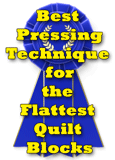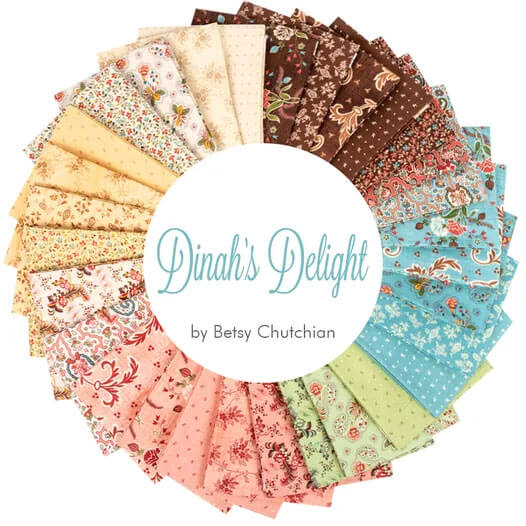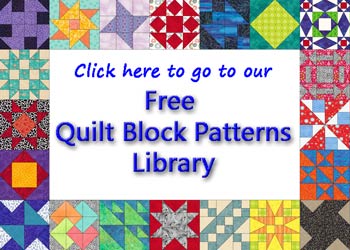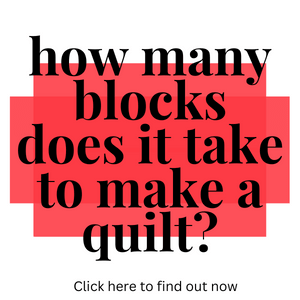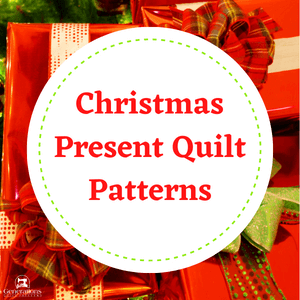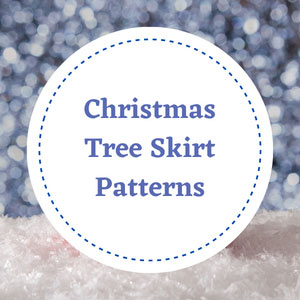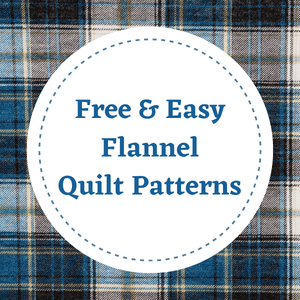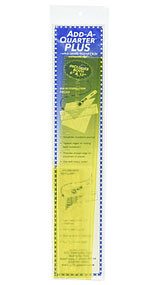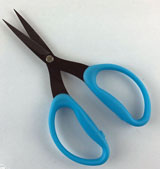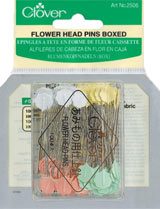- Home
- Free Quilt Block Patterns
- Triangle Weave Quilt Block
Triangle Weave Quilt Block Tutorial
From our Free Quilt Block Patterns Library
This post contains affiliate links, for which I receive compensation.
Skill Level: Beginner
The Triangle Weave quilt block is all about pointy points.
To achieve them, my preferred method includes paper piecing. However, not everyone is wild about that technique!
To accommodate both preferences, on this page you'll find instructions for paper and traditional piecing methods in four different sizes.
The choice is yours to make.
And of course, anytime paper piecing is used, the patterns are available as a free download in all the sizes needed.
Let's get started!

📋 General Instructions
These abbreviations are used on this page:
- SA - seam allowance
- RST - right sides together
- HST - half square triangle
- BitA - Birds in the Air unit
SA are 1/4" unless otherwise indicated.
When instructed to press, first press the pieced unit flat to set the seam.
Then open the patch, pressing from the front.
Seam allowances are pressed to the dark fabric unless otherwise noted.
Whether I'm paper piecing or using rotary cut patches, this is the best 'trick' I've found for getting the flattest quilt blocks. Click the 'blue ribbon' to the right to learn how you can do it, too!
Step 1: Download paper piecing patterns/templates
If you are using only traditional piecing techniques, you can skip this step, otherwise...
...you'll need to print Birds in the Air paperpiecing patterns to complete this block.
You'll need the most current version of Adobe installed on your computer to download the pattern.
On the Adobe Print Menu page, under 'Page Size and Handling' set 'Custom Scale' to 100% before printing for accurate results. Click here to see what it looks like on the Print Menu page.
After printing, use the 1" square graphic on the printed pages to confirm they are printed accurately.
Choose your finished block size from the chart below.
Print the Birds in the Air Units | ||
|---|---|---|
| Finished Block Size | # of copies | PDFDownload Unit Size |
| 4" | 1 | 2" |
| 5" | 1 | 2-1/2" |
| 6" | 1 | 3" |
| 8" | 1 | 4" |
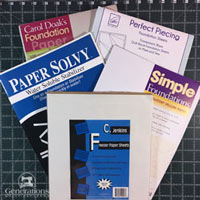
Not sure which paper to use?
Take a look at my review of several of the most popular brands available to us quilters on the market.
You want a super-easy paper to tear away—less stress on the stitches.
The newest quilt fabrics to tickle your fancy...
Click the images below to see the full collection. We share any commercial and/or free patterns that showcase them, too. (For inspiration, of course!)
Step 2: Cut patches for a Triangle Weave
 Triangle Weave design
Triangle Weave designSample Block: 6" (6-1/2" unfinished)
Grid: 1-1/2"
Attributed to: Quilters' Newsletter Magazine
In both charts below:
- The dimensions listed are for squares. For example, in the blue chart, for our 6" sample block, Patch 1 is cut from a dark 2-3/8" x 2-3/8" square that is sub cut once on the diagonal.
- Patches 7 & 8 are used to make the small half square triangles. You may wish to cut these patches a bit bigger and then trim the finished HSTs to size as is shown in the instructions. Again, the choice is yours!
Choose your favorite method of piecing and then choose the corresponding chart below. Our Fabric A is a dark and Fabric B is a light, but you can just as easily reverse them for a different look.
 |
Cutting Chart for a~ Includes Paper Piecing Patches #1-#5 ~ | ||||||
|---|---|---|---|---|---|---|---|
| Patch | Fabric | Qty | Finished Block Size | Sub Cut | |||
| 4” | 5” | 6” | 8” | ||||
| 1 | A | 1 | 1-7/8” | 2-1/8” | 2-3/8” | 2-7/8” | |
| 2, 3, 4 | B | 3 | 2-3/8” | 2-5/8” | 2-7/8” | 3-3/8” | |
| 5 | A | 1 | 3-3/8” | 3-7/8” | 4-3/8” | 5-3/8” | |
| 6 | B | 4 | 1-1/2” | 1-3/4” | 2” | 2-1/2” | na |
| 7** | A | 2 | 1-7/8” | 2-1/8” | 2-3/8” | 2-7/8” | na |
| 8** | B | 2 | 1-7/8” | 2-1/8” | 2-3/8” | 2-7/8” | na |
| Grid Size | 1” | 1-1/4” | 1-1/2” | 2” | -- | ||
| Unfinished block size | 4-1/2" | 5-1/2" | 6-1/2" | 8-1/2" | -- | ||
| **I prefer to cut my patches extra large for HST, stitch, and then trim them to size. If you prefer to do the same, add a bit extra to the measurements for Patches #7 and #8 above. There is a chart further down in these instructions where you need it for trimming them to size. | |||||||
 |
Cutting Chart for a~ Traditional Piecing ~ | ||||||
|---|---|---|---|---|---|---|---|
| Patch | Fabric | Qty | Finished Block Size | Sub Cut | |||
| 4” | 5” | 6” | 8” | ||||
| 1 | A | 1 | 1-7/8” | 2-1/8” | 2-3/8” | 2-7/8” | |
| 2, 3, 4 | B | 3 | 1-7/8” | 2-1/8” | 2-3/8” | 2-7/8” | |
| 5 | A | 1 | 2-7/8” | 3-3/8” | 3-7/8” | 4-7/8” | |
| 6 | B | 4 | 1-1/2” | 1-3/4” | 2” | 2-1/2” | na |
| 7** | A | 2 | 1-7/8” | 2-1/8” | 2-3/8” | 2-7/8” | na |
| 8** | B | 2 | 1-7/8” | 2-1/8” | 2-3/8” | 2-7/8” | na |
| Grid Size | 1” | 1-1/4” | 1-1/2” | 2” | -- | ||
| Unfinished block size | 4-1/2" | 5-1/2" | 6-1/2" | 8-1/2" | -- | ||
| **I prefer to cut my patches extra large for HST, stitch, and then trim them to size. If you prefer to do the same, add a bit extra to the measurements for Patches #7 and #8 above. There is a chart further down in these instructions where you need it for trimming them to size. | |||||||
Step 3: Construct the subunits for our Triangle Weave
For detailed instructions to make these HSTs visit: Half Square Triangle: Quick Pieced
Draw a diagonal line on the back of the #8 light squares.
With RST, layer each marked patch with a #7 dark patch and sew 1/4" from the line on both sides.
Cut apart on the line.
Press.
Use the chart below to check the accuracy of your stitching. Trim as needed.
Small HST Dimensions | ||
|---|---|---|
| Finished Block Size | Trim to | |
| 4" | 1-1/2" | |
| 5" | 1-3/4" | |
| 6" | 2" | |
| 8" | 2-1/2" | |
HST Subunits
Make 2

Sew a light 2" square to the dark side of a small HST unit you just constructed.
Repeat 3 more times adding the square to the same side.
Press with SAs towards the solid square.
They look like this.

Arrange them into pairs with the dark triangles kitty corner from each other. The seams nest to assist in matching.

Stitch and press. Repeat for the second pair.
Birds in the Air Subunit
Make 2

Depending on the cutting chart you used above, click on the appropriate link below for instructions for each technique.
Both links open in a new window to make it easier to get back to this point in the tutorial.
Refer to the chart below for the dimensions to trim the unfinished blocks.
Birds in the Air Unit Dimensions | ||
|---|---|---|
| Finished Block Size | Trim to | |
| 4" | 2-1/2" | |
| 5" | 3" | |
| 6" | 3-1/2" | |
| 8" | 4-1/2" | |
Step 4: Assemble the Triangle Weave quilt block
Arrange the units to create the Triangle Weave design. A light HST is in all four corners.

Stitch into pairs. Press towards the BitA.

Stitch the rows together. Give it one final press.
And the finished Triangle Weave quilt block looks like this...
 The finished Triangle Weave quilt block
The finished Triangle Weave quilt blockClosely Related Blocks
A handful of patchwork designs share the same basic structure as our Triangle Weave quilt block.

In this first one, the Goose and Goslings quilt block, can you see the difference?
The HST subunits are rotated a 1/4 turn.
This block is know as a Bow Tie Variation, Crosses and Losses, Double X or Fox and Geese.
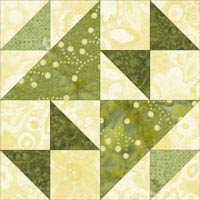
In this variation, our Triangle Weave is flipped on its vertical axis and two additional fabrics are added to the mix.
It's other names are Hourglass and Old Maid's Puzzle. (The underlined links lead to other blocks by the same name.)
Oh, what a tangled web we weave,
when first we practice to...
...stitch more quilt blocks!
Click the image below to go to our Free Quilt Block Patterns Library to find more tempting patchwork designs to make!
What about a different quilt block?
For a list of all the 220+ quilt block patterns on this site, start here.
If you know the name of the block, shorten your search by using these links:
Click here if you're looking for blocks with at least some paper piecing.
Click here if you're looking for the basic building blocks of quilting, i.e., Flying Geese, half square triangles, quarter square triangles, etc., along with several techniques to make each.
And finally, use these links to find blocks in these finished sizes:
